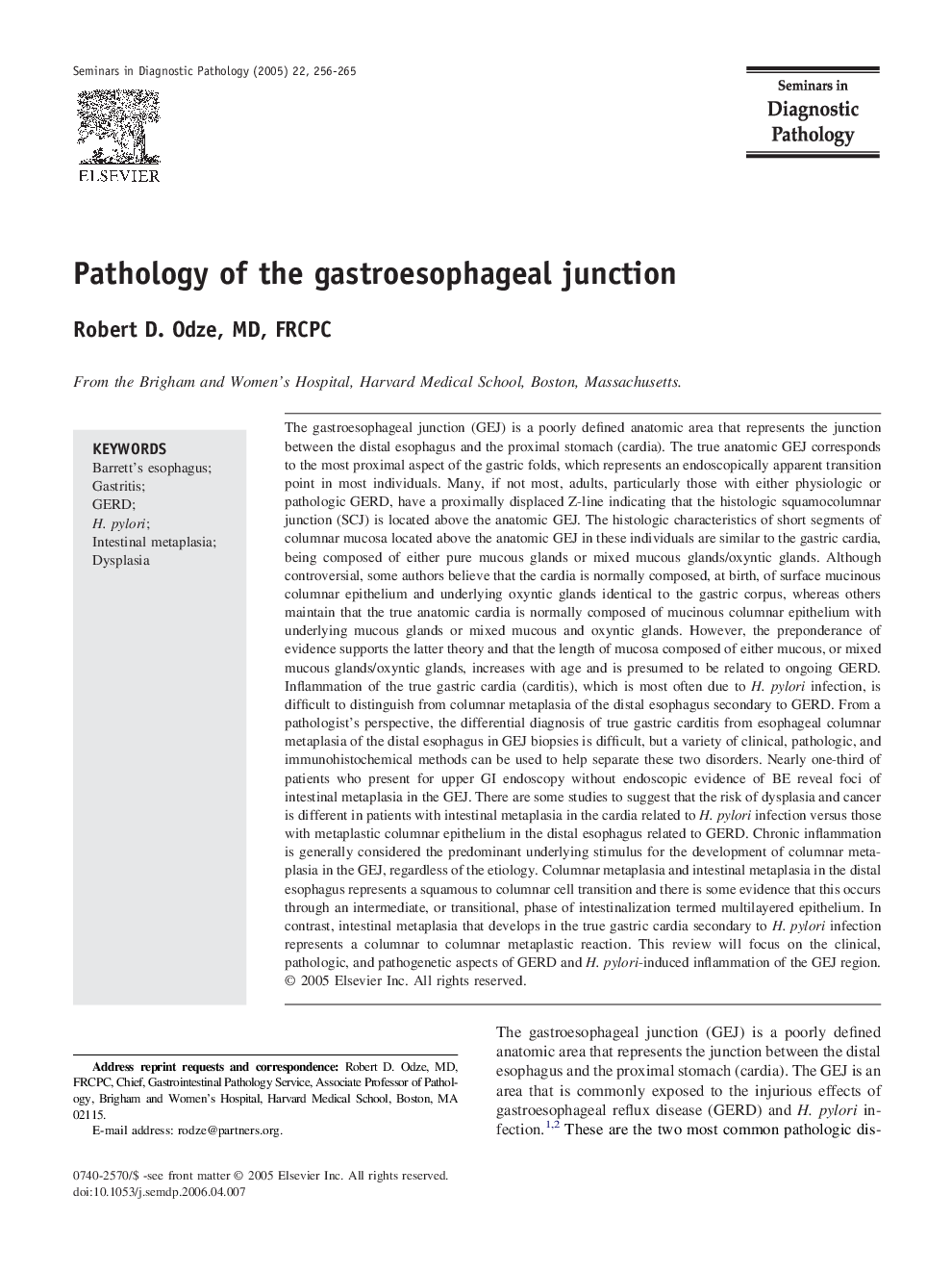| Article ID | Journal | Published Year | Pages | File Type |
|---|---|---|---|---|
| 9367561 | Seminars in Diagnostic Pathology | 2005 | 10 Pages |
Abstract
The gastroesophageal junction (GEJ) is a poorly defined anatomic area that represents the junction between the distal esophagus and the proximal stomach (cardia). The true anatomic GEJ corresponds to the most proximal aspect of the gastric folds, which represents an endoscopically apparent transition point in most individuals. Many, if not most, adults, particularly those with either physiologic or pathologic GERD, have a proximally displaced Z-line indicating that the histologic squamocolumnar junction (SCJ) is located above the anatomic GEJ. The histologic characteristics of short segments of columnar mucosa located above the anatomic GEJ in these individuals are similar to the gastric cardia, being composed of either pure mucous glands or mixed mucous glands/oxyntic glands. Although controversial, some authors believe that the cardia is normally composed, at birth, of surface mucinous columnar epithelium and underlying oxyntic glands identical to the gastric corpus, whereas others maintain that the true anatomic cardia is normally composed of mucinous columnar epithelium with underlying mucous glands or mixed mucous and oxyntic glands. However, the preponderance of evidence supports the latter theory and that the length of mucosa composed of either mucous, or mixed mucous glands/oxyntic glands, increases with age and is presumed to be related to ongoing GERD. Inflammation of the true gastric cardia (carditis), which is most often due to H. pylori infection, is difficult to distinguish from columnar metaplasia of the distal esophagus secondary to GERD. From a pathologist's perspective, the differential diagnosis of true gastric carditis from esophageal columnar metaplasia of the distal esophagus in GEJ biopsies is difficult, but a variety of clinical, pathologic, and immunohistochemical methods can be used to help separate these two disorders. Nearly one-third of patients who present for upper GI endoscopy without endoscopic evidence of BE reveal foci of intestinal metaplasia in the GEJ. There are some studies to suggest that the risk of dysplasia and cancer is different in patients with intestinal metaplasia in the cardia related to H. pylori infection versus those with metaplastic columnar epithelium in the distal esophagus related to GERD. Chronic inflammation is generally considered the predominant underlying stimulus for the development of columnar metaplasia in the GEJ, regardless of the etiology. Columnar metaplasia and intestinal metaplasia in the distal esophagus represents a squamous to columnar cell transition and there is some evidence that this occurs through an intermediate, or transitional, phase of intestinalization termed multilayered epithelium. In contrast, intestinal metaplasia that develops in the true gastric cardia secondary to H. pylori infection represents a columnar to columnar metaplastic reaction. This review will focus on the clinical, pathologic, and pathogenetic aspects of GERD and H. pylori-induced inflammation of the GEJ region.
Related Topics
Health Sciences
Medicine and Dentistry
Pathology and Medical Technology
Authors
Robert D. MD, FRCPC,
